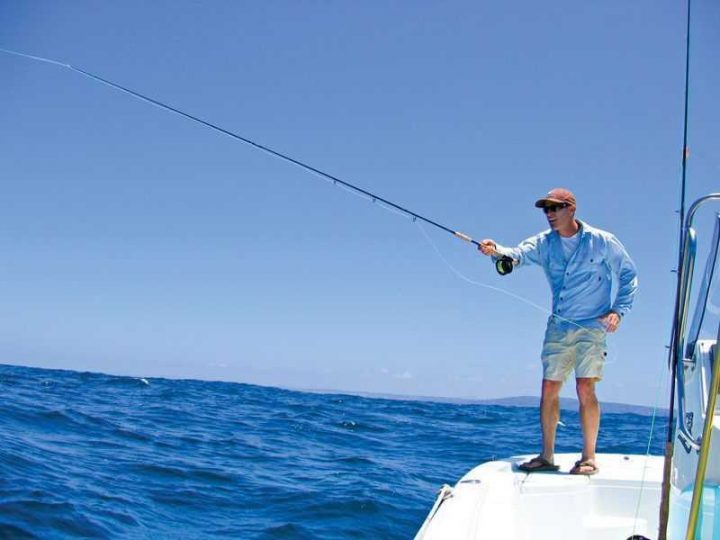More often than not, when fishing in deeper water for species like stripers, tuna, bonito, yellowtail or amberjack, it is critical to get your fly to a proper depth in the water column. The “hit-zone” can be just a few feet below the surface or as deep as 30 feet. A sinking line or sinking shooting head is the accepted way of getting the fly into the “hit zone,” but there are other ways of adding more depth.
From a Drifting Boat –
When fishing from a drifting boat, position yourself in the bow or the stern and cast up current or in the direction the boat is drifting. As the boat drifts, the fly will sink deeper into the water column. When the fly line is directly in front of you and the line becomes taut begin stripping in the fly.
From an Anchored Boat –
The up-current cast works just as well from an anchored boat. This method has an advantage over the drifting boat in that the fly will sink deeper because the boat is not drifting. When fishing around deep-water rocks, pilings and offshore oil rigs, this approach is especially effective.
From the Shore or Jetty –
Thinking of swinging a fly for salmon or steelhead? The previously mentioned techniques are just as effective in sinking your fly from the beach or jetty. Determine the direction of the current or rip. Cast the fly up into the current, allowing the fly and fly line to swing past you until it swings, and once it tightens begin your retrieve. Remember that many times a strike will happen as your fly is sinking or on the swing, so be alert for the most subtle and out-of-the-ordinary movements of your line.
